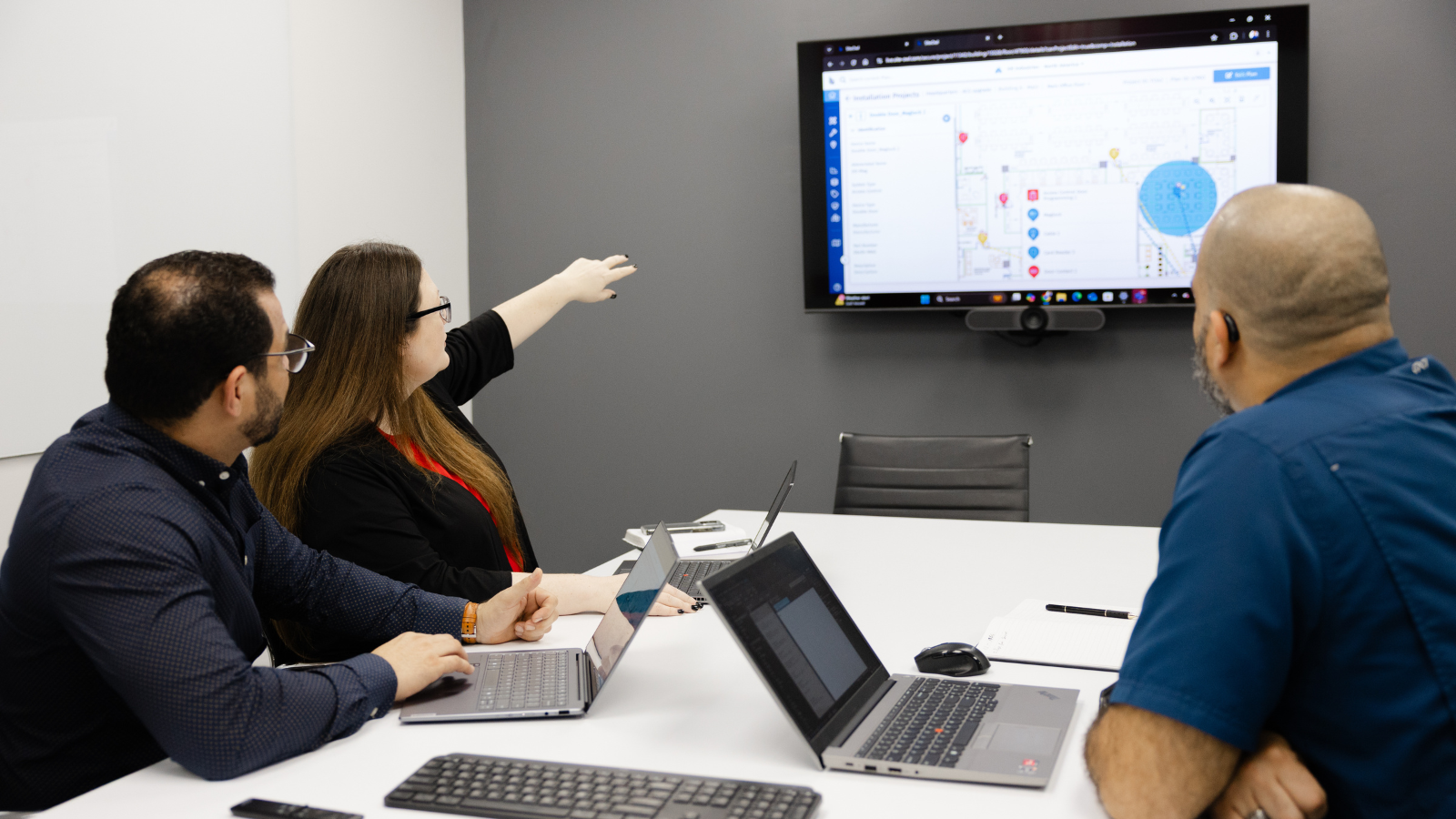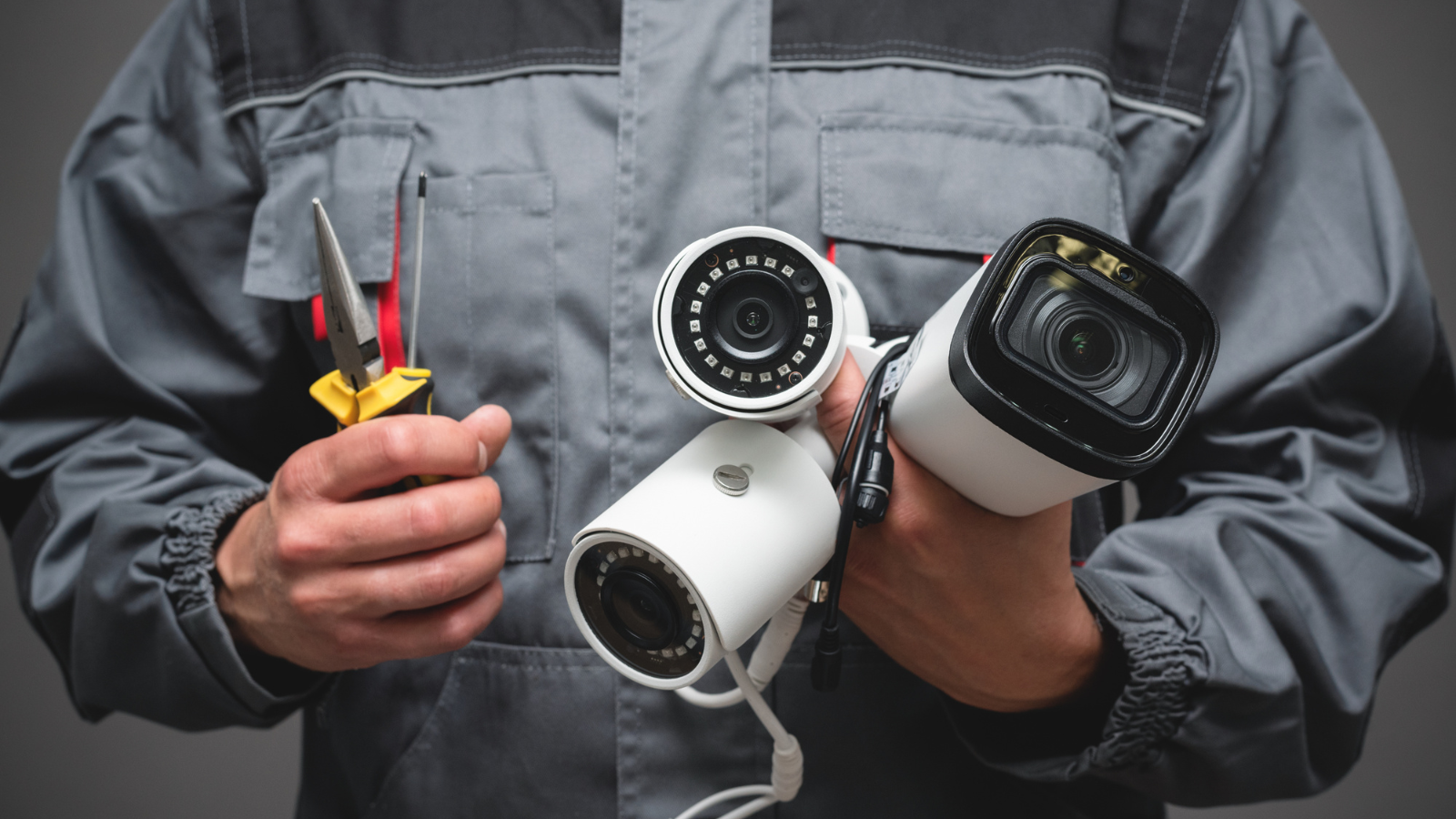Digital transformation is the biggest change in the last 30 years and no industry, including physical security, is immune to its impact. The numbers speak for themselves.
According to the latest digital transformation report, 87% of senior business leaders say digitization is a priority and 97% of enterprise decision-makers are involved in a digital transformation initiative.
For years, the physical security industry has slowly embraced digital transformation. Unfortunately, this resistance created all kinds of pain points for integrators and end users alike, including a lack of integration between systems and suboptimal information, soiled connectivity issues, lifecycle management challenges, and much more.
With the introduction of cloud-based digital platforms tailored for the physical security industry, companies have the opportunity to leverage the power of the cloud to manage to transform the delivery and management of their physical security infrastructure.
In this article, we’ll share the impact of digital transformation on the physical security industry, and how cloud-based digital platforms are transforming the way integrators and end users manage their systems in this new environment.
Table of Contents
- Digital transformation of physical security
- Digitally transforming your physical security infrastructure
- Digitizing your current systems and process
- Embracing digital transformation
- Get the most of your security investment
Digital transformation of physical security
Compared to other industries, such as healthcare, transportation, and oil and gas, the physical security industry has lagged in adopting digital transformation.
- In health care, for example, a recent report highlighted that 99% of healthcare executives report that digital transformation is a priority.
- The transportation and logistics sectors have also accelerated their adoption of digital technologies and are ranked 5th among 11 industries globally with a high digital transformation acceptance score.
- In the oil and gas industry, digital transformation is also a priority. Companies are using sensors and data analytics to improve the accuracy of drilling operations and employees’ safety.
Digital transformation of physical security is still in its early stages, but some clear trends are already setting the stage for a potential transformation of the industry.
Digitally transforming your physical security infrastructure
For a long time, the physical security industry was held back by limitations in legacy security systems. They were either too expensive, too difficult to install and manage, or too problematic to integrate into enterprise systems. In addition to the technical limitations, many physical security professionals still use manual processes to manage their security infrastructure, making it difficult to manage operations across multiple locations, not to mention the lifecycle management of their physical security systems. Fortunately, the same type of scale other industries have seen with digitization can be realized in the physical security sector. Streamlining processes is far easier to achieve than you think, mainly thanks to lifecycle management platforms that integrate with other systems to automate many of the manual processes required to manage your physical security systems. A digital approach to physical security will help you get the most out of your security investments by empowering you and your team with:
- Comprehensive System View
Consolidate, track and manage all your physical security devicesacross multiple locations with a single interface.
- Real-time Project Status
Stay on top of ongoing security system deployments and maintenance work in real-time.
- System Audit and Maintenance Tracking
Easily monitor ongoing service issues and conduct system-wide audits to identify and fix security gaps. With SiteOwl, you can accomplish all these and more without leaving the office while reducing operational inefficiencies and costs.
Digitizing your current systems and process
Digitizing your physical security systems and processes is a complex task. From inventorying your assets to building a culture that embraces change, the process is complex and requires a deep understanding of your organization’s needs.
At SiteOwl, we take a holistic approach to digitizing physical security systems and processes, and we wrote an ebook to help you navigate the process, but for this article, here are five steps to get you started:
1. Inventory physical security assets
Asset inventory is a crucial part of the digitization process. You need to know what you have to manage it effectively. Unfortunately, many security professionals need help with this task because they use different security systems and databases to store information.
To get the most value from your security assets, you must be able to track and analyze issues across your entire security infrastructure. Details such as the location of your assets, maintenance requirements, depreciation performance, and eventual asset disposal will become challenging to manage if you don’t have a centralized view of all your assets.
2. Conduct a physical security vulnerability assessment
Before designing or upgrading your current systems, a comprehensive assessment of the vulnerabilities in your physical security systems is essential. With it, you may avoid critical vulnerabilities and preventable risks.
Physical vulnerabilities can include physical design elements, such as the location of doors and windows, procedural gaps for responding to systems, and operational issues.
3. Keep things scalable
Scalability is one of the most important factors when digitally transforming your physical security systems. It would be best to consider how your physical security systems can scale with the rest of your organization. For example, a scalable system does not require the abandonment of any equipment to make room for new designs. Scalable systems can adapt to changing requirements and technology.
To accomplish effective digital transformation, you must ensure that your new technology can grow and expand as your needs change. This will require device-level service and warranty information to appropriately plan for future upgrades and budget.
4. Focus on building a culture that supports security
Building a culture that prioritizes security is critical for digital transformation. No amount of devices can ensure security if people and processes are not aligned with the technology. People and processes can include policies, standards, and guidelines that focus on security. When people understand and embrace a culture of security, you can reduce the potential for failure in the system and improve overall security.
5. Make fiscally sound security investments
The inability to prioritize and make fiscally sound security decisions can inhibit digital transformation. This is particularly true when organizations need more resources to deploy the technology. Organizations must evaluate and prioritize the risks they face and the threats they must defend against. That’s why it’s important to have complete visibility of your technology and the ability to see security incidents’ financial and operational impact.
Embracing digital transformation
Digital technology is transforming all aspects of our world, and it is only picking up speed as 89% of enterprises are planning to adopt or have already adopted a digital business strategy.
Every industry is going through a revolution, and security is no exception. The traditional physical security paradigm that has been in place for decades is being digitized rapidly. Here are a few examples that show the impact of digitization:
- Gartner’s 2020 I&O Leaders Survey data shows that 70% of organizations are investing in SaaS and cloud applications and will continue to do so in the future.
- According to Forrester, 75% of business leaders cite improved business agility and 74% cite speed of implementation and deployment as the benefits that factored into their firm’s decision to move to pure SaaS.
- 83% of workers rely on technology to collaborate with colleagues and customers.
- Physical security report highlighted that 40% of security and facility professionals had centralized their physical security systems in the cloud, up 35% from 2021.
- Companies estimate 70% of the business apps they use will be SaaS by 2025 will be SaaS-based.
The time has come to take the opportunity to leverage the power of technology to digitally transform the delivery and management of your physical security systems.
Get the Most Out Of Your Security Investment
The physical security industry is facing ongoing digital disruption challenges. Organizations need to be agile and have a strong technology partner to succeed in this new digital world to manage their physical security systems effectively. Holding on to the status quo will not work as digital transformation continues to evolve and take hold.
Organizations are looking for ways to leverage the latest technologies and digital platforms to maximize their security investments in a digital-first environment. This requires a technology partner that can deliver real-time insights, analytics, and reports that enable organizations to make smarter decisions and manage their physical security effectively.
SiteOwl is an award-winning platform transforming how enterprise security teams, integrators, and end users manage physical security systems.
Learn more and obtain actionable insights into your physical security systems and processes to help make your organization more secure by downloading our free eBook: Managing The Lifecycle of Physical Security Systems. It’s a practical guide for enterprise security teams to navigate the digital transformation of their physical security systems, and it’s filled with actionable tips and best practices.

Su Subburaj
Su is SiteOwl's CMO and leads all marketing and communications. Su has extensive strategy and management consulting experience and previously consulted for 3Sixty Integrated where she gained an in-depth understanding of digital transformation challenges in the physical security industry. When not working on strategies to expand SiteOwl's footprint, Su enjoys bad karaoke, weightlifting and traveling.








